If cover letters are about first impressions, then thank you letters can be described as last impressions. A well worded note to an employer to thank them for the opportunity to interview and reaffirm your interest in the job can be an effective way of reminding the employer of your candidacy just at that moment when they are preparing to make a decision.
Ask the Employment Specialist: Should my LinkedIn profile be the same as my resume?
Dear Employment Specialist,
After being laid off from my Inside Sales job, and struggling to find another suitable job in my field, I went to JVS Toronto to get help. With the help of my JVS Employment Counsellor, I have now finished preparing my resume, and have begun to work on my LinkedIn profile. My Counsellor recommended that I simply cut and paste my resume into the LinkedIn profile, but when I looked through other profiles of people in my field, I noticed that many people have profiles that are very different from what they might have on a resume.
I noticed that their LinkedIn profiles were often longer, and some seemed more casual and personal than a resume should. I’m confused now: should my resume just be an online version of my resume?
Thanks,
Signed: Need Help with my Profile (NWP)
Dear NWP,
That’s a question that I often hear from my clients. Your Employment Counsellor is correct: when preparing your LinkedIn profile, it helps to have a well written, spell checked and proof read resume from which to cut and paste. But, as I see it, that’s only your first step — once you have inserted the jobs, education and summary from your resume to your LinkedIn profile, you have an opportunity to add so much more valuable information about yourself. The goal of this is to make you stand out to employers as not just suited for the job, but as an interesting, impressive and likable person.
Think of your resume as your brochure, or self-marketing document: it’s brief (no more than two pages long), and written in concise, simple, and formal language (without first person pronouns). Your resume goes back no further than 10 years. It also is supposed to be adapted to each job to which you apply.
Your LinkedIn profile, however, is quite different. It is a living, dynamic record of you and your career. LinkedIn provides you with a chance to tell your story using a range of media (text, slideshows, photos, documents, websites and video). It is supposed to be more a personal description of you — it includes your photo, an opportunity to share your personal interests or passions, and to share your activities.
As a job seeker who is sending out resumes to potential employers, make sure that your LinkedIn profile reveals something new about you. You want them to be impressed by who you are and your personality, in addition to your expertise and professional background.
Here are some other features of your LinkedIn profile that distinguish it from your resume:
- Work history: LinkedIn allows for longer, more detailed work history than the standard 10 year span of a resume. If you have good, worthwhile experience that goes back more than 10 years, share it on LinkedIn. There are no space restrictions and age should be less of a concern, since employers can see your photo anyway.
- Summary: your LinkedIn Summary is an opportunity to introduce yourself, explain your history and give potential employers an opportunity to learn about what makes you unique. It can be less formal and more wordy than a resume profile — just make sure that the tone is appropriate for your industry.
- Personal interests: while employers are not really interested in reading about your personal interests and hobbies on your resume, LinkedIn does offer space to list some of your interests. Choose what you share carefully, of course. Think about what your choices tell the employer about you. Consider listing interests that your potential employer might have in common with you.
Start off with cutting and pasting your summary/profile, jobs, and education into your LinkedIn profile. Next, consider whether you want to add other jobs that you might have left off your resume. Check out the LinkedIn profiles of other professionals in your field to help you figure out the best tone and style for your profile, and set out to inspire and impress your next employer.
Best wishes for your job search!
How to Find a Summer Job
 We may still be in the depths of winter, but if you are hoping to find summer employment, it’s time to start looking. In fact, it’s late – the Government of Canada Summer Jobs program has closed for 2017 already (next time, check the website in August of the year before).
We may still be in the depths of winter, but if you are hoping to find summer employment, it’s time to start looking. In fact, it’s late – the Government of Canada Summer Jobs program has closed for 2017 already (next time, check the website in August of the year before).
Employers are already looking ahead to the summer, and are already thinking of ways to accommodate staff vacation requests for July and August. Summer hiring happens everywhere, in a range of sectors. These include those obviously related to the season such as amusement parks, summer camps, resorts, and camp grounds, as well as seasonal sectors such as landscaping, tourism, and agriculture. Government post jobs for students in a range of departments, on all three levels, including municipal, provincial and federal.
It’s not just students who benefit from summer hiring — some of the jobs are open to anyone. These jobs may even provide opportunities than might turn into full-time permanent work. [Read more…]
Ask the Employment Specialist: How do I update my skills?
Dear Employment Specialist,
I am a computer programmer with a company that designs transportation solutions for the trucking industry. I know I am lucky to have my job, but I worry about keeping up my skills, with new advancements coming up all the time in my field. I worry that it eventually will be necessary for my company to replace me with someone else who has the new skills and knowledge, because I have not been keeping updated.
My employer doesn’t do much to help me with updating my skills and I don’t really have the money or time to take off to go take a course. Any suggestions on where or how I could improve my skills?
Signed: Struggling to Keep Up (STKU)
Dear STKU,
Some people might be surprised to hear that employers in the ICT (Information and Communications Technologies) sector struggle to find employees with the skills they need. In fact research that examined ICT trends for the next few years, showed that by 2019 there are expected to be 182,000 jobs in that won’t be filled in Canada because of a lack of skills. A Globe and Mail article recently pointed out that these include careers such as “computer programmers, software engineers, data administrators, information systems analysts and network operators – good paying, interesting jobs in a variety of fields, including healthcare, entertainment, financial services, marketing, and just about any other industry you can think of.”
You are not the only one we have heard from in your field who complains that while employers ask in interviews about candidate’s commitment to life long learning, they don’t always make it easy for ICT professionals to get the training they need. So, it’s up to you to take the initiative and seek out courses. The good news is that there are many online options available.
Many of the high demand skills in your sector can be learnt online, often using high quality, low cost or free sites. The Globe and Mail article identifies some good suggestions for accessible online courses, including Massive Open Online Courses (MOOCs), which are free online courses, often from highly respected universities and colleges. Look for courses on sites such as Coursera, EDx, Udacity, and Code School which are especially renowned for information technology and computer sciences.
I commend you for making an effort to keep your skills up to date. Try to stay ahead of the curve, by tracking which skills are in high demand. You can do this by reviewing job postings in your field, and identifying what employers ask for. Set up online job alerts, and keep track of jobs as they are posted.
One final tip — if your employer is open to paying for training, the government of Ontario might be able to help. Working with the Government of Canada, they offer The Canada-Ontario Job Grant to provide financial support to employers who wish to purchase short-term training to existing and new employees. JVS Toronto is an approved service provider of the Grant through our five Employment Services locations in the City of Toronto and York Region. Contact us for more information.
Good luck with your career.
Use LinkedIn to Find Work in 2017
Since launching in 2003, LinkedIn has grown into the largest online professional networking site, with over 380 million members worldwide, including over 12 million users in Canada. As economic changes have happened globally, and with the increasing popularity of online job search, LinkedIn is acknowledged as a leader in connecting job seekers to potential employers, with 94% of recruiters using LinkedIn to vet candidates.
What are the benefits of LinkedIn for the average job searcher, then?
First, it allows you to connect with people who may be in a position to help promote your career. Remember – it’s not only what you know, or who you know; these days, it’s who knows you and how easily they can find you that matters.
Second, by setting up a strong and impressive LinkedIn profile, you are showcasing your social media skills; your social media savvyness might be helpful to convince employers that you have up-to-date abilities.
Also, a complete profile on LinkedIn will show up in the top results of a Google search that an employer might conduct. It will help you control your online image, and override anything else that might appear about you online.
Finally, it is a great source of up-to-date information and insights about jobs, companies and trends. You can learn about companies, read up on trends and join discussions with like-minded professionals in your field.
Here are some steps to help you set up and begin using your profile on LinkedIn:
1. Prepare — set aside some time to put together your profile. Have the following ready:
- You will need an updated resume, which is complete, well worded and accurate, and includes a well written profile summary
- Prepare a list of key words that describe your most relevant skills and achievements; the best source of these skills is from online job postings – have a look at the qualifications employers are requesting and use the SPECIFIC words that they list. Remember that LinkedIn, Google and the rest of the Internet is key word driven – if you don’t use the specific words needed to describe your abilities, you will not be found in a search
- Prepare a profile photo to upload – keep it simple and professional
- Be willing to access your email address book, from which you will download your contacts to connect with them.
2. Complete your LinkedIn profile – your goal is to eventually achieve a 100% completeness.
- Add your jobs and education — include jobs from the last 10-15 years of work, or even more. Use the correct job titles and company names. Include a relevant description of what you did in each job — cut and paste from your resume; you can always edit it later on LinkedIn, if you feel the need to add or modify your profile
- Upload your profile photo — images are very useful to validate your profile; profiles without photos tend to be perceived as either fake, or simply incomplete
- Connect with people – be open to invite as many people as you know and accepting invitations from a range of people; generally, it’s better to have more contacts rather than less. You never know who might know someone (or something) that may be of use to you. Make sure not to send out mass invitations, and that each invitation is personalized, including a brief reminder about how you know that person
- Seek out recommendations – start with offering to write recommendations first, if that helps
3. Use your profile to meet your goals — don’t just set it up and walk away:
- Set out to connect with and meet new people – expand your network through joining groups and participating in discussions, online and in person networking sessions
- Job Search on LinkedIn – the job search tool is excellent and will help you discover who is hiring and whether you know anyone who can recommend you to a job
- Identify a list of target companies, seek them out on LinkedIn and follow them to see who they hire and for what positions
- Update your status – share interesting articles and keep your contacts updated about your activities – stay positive and upbeat, but make sure they know that you are looking for work.
As with any job search tool, LinkedIn is only as effective as the amount of time and effort you put into it. Make sure to keep using it, consistently staying in touch with your contacts, reaching out to new people and companies, as well as join networks and discussions. By harnessing the power of the most up to date job search tool available, and using it well, you will be showing employers that you have the cutting edge skills they need for a changing economy.
- « Previous Page
- 1
- …
- 10
- 11
- 12
- 13
- 14
- …
- 24
- Next Page »




